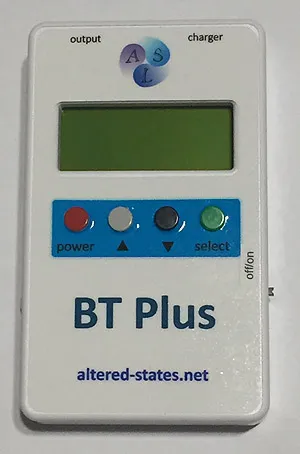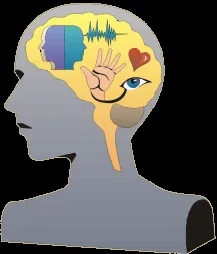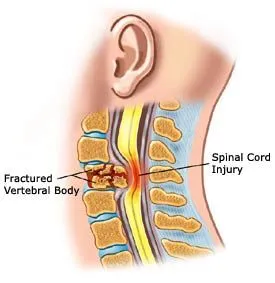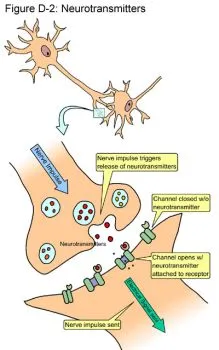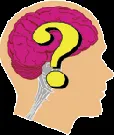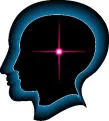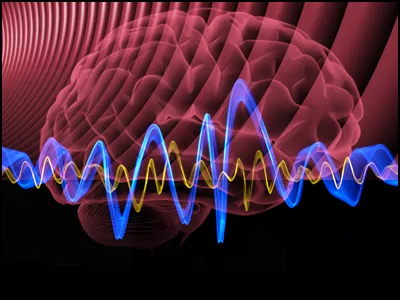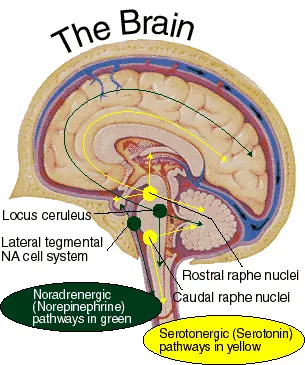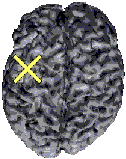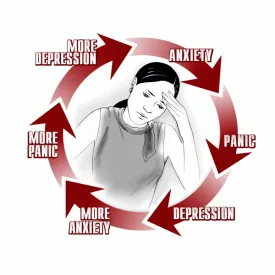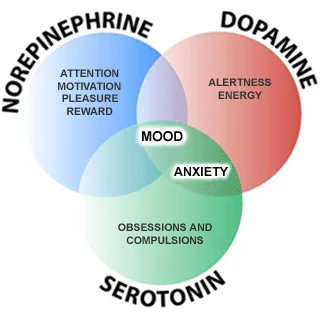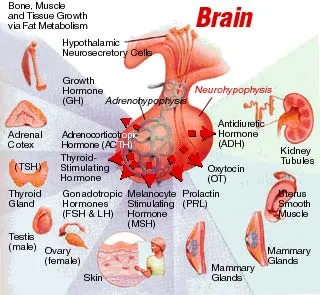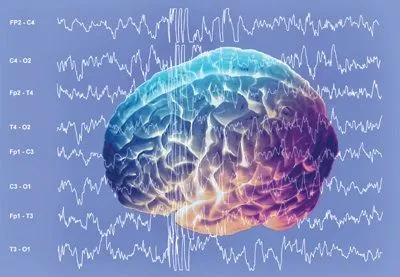|
THE BT Plus
The Ultimate BT system CES is the anti-drug—the non-pharmacological alternative for the Addictions withdrawal and the treatment of anxiety, depression, and insomnia. It is a unique and viable "bioelectric" approach which seems to enhance the homeostasis (Balance) of the biological central nervous system—the tendency for intrinsic balance within a system. Its ethic is that of self-regulation. Its goal, wellness—a state of proper alignment—the balanced interplay of body and mind attained through personal empowerment rather than dependency. Cranial Electrotherapy Stimulation: A Non-Drug Neuromedical Treatment "Cranial Electrotherapy Stimulation (CES) is the application of low-level pulsed electrical currents (usually less than 1 milliampere) applied to the head for medical and/or psychological purposes. There is now better than 20 years of medical experience with CES in America. Presently, its use requires a prescription by a licensed health practitioner in the United States. It is available without a prescription throughout the rest of the world." CES in the United States has received Food and Drug Administration marketing
clearance for the treatment of anxiety, depression, and insomnia. CES
devices are sold over the counter in Europe and other parts of the world.
Mood disordered alcoholics have shown increased activity of the enzyme
MAO-B in the spinal fluid after 20 CES treatments. (3) Patients with
treatment-resistant depression have shown significant (P < 0.0089)
elevations in plasma serotonin. (4) Increases in cerebrospinal fluid
levels of [beta]-endorphins up to 219%, plasma endorphinsendorphins (endôr`finz),
neurotransmitters found in the brain that have pain-relieving properties
similar to morphine. There are three major types of endorphins: beta
endorpins, found primarily in the pituitary gland; and enkephalins and
up to 98%, and cerebrospinal fluid serotonin up to 200% have been demonstrated
in normal volunteers receiving 20 minutes of CES. A recent annotated
bibliography of CES by Kirsch details 126 human and 29 experimental animal
studies of CES conducted over the past 40 years. More than half the studies
cited are from the peer-reviewed literature. The majority of the studies
were double-blinded and conducted at major American universities. In
aggregate, there were 6,007 patients treated under varying research conditions,
with 4,541 actually receiving CES treatment. One hundred twelve (89%)
of the studies reported positive outcomes. Seventeen studies followed
up the patients to assess any continued results after 1 week to 2 years,
and all the patients showed at least some residual effect after one or
a series of treatments. To date, several thousand Americans are treated with CES annually and
more than eleven thousand persons own CES devices, which have been prescribed
for their home use. Possibly the most exciting application of the CES
is for drug addiction. Further studies are needed to fully document use
of the device for these purposes. In this technological age when we are
surrounded by electromagnetic fields and currents, CES treatment may
be necessary as an antidote and for maintenance of fully optimum health.
Electromagnetic “ pollution” from video screens, televisions,
stereophonic equipment, microwaves and phone lines may be destroying
our health and may require a device of this type to counter these negative
effects.CES may provide natural levels of supplementary current to keep
the brain healthy in the electrical age. DRUGS "Double-blind studies were done at the University
of Wisconsin on the Brain Tuners’s capabilities to overcome drug-withdrawal
symptoms and it did the job. Studies at both Wisconsin and the University
of Louisiana showed it could boost IQ from twenty to thirty points. Brain
Tuners stimulation appears to enhance neural efficiency," researchers
stated.
This paper reviews the scientific literature on cranial
electrostimulation
The microcurrent, delivered in a unique waveform, moves electrons through
the brain at a variety of frequencies, collectively known as harmonic
resonance. This normalizes the electrical activity of the brain as measuredby
an electroencephalogram (EEG). It is also believed that micro-current stimulation restores cellular electrical balance by changing potentials across cell membranes. This may alter the levels of certain ions and molecules toward a desirable equilibrium. Other physiological effects are believed to be produced: reduction of alkalinity proximate the passage of electrical current and the production of low levels of hydrochloric acid which can scavenge free radicals; attraction of oxygen to the region; localized vasoconstriction and vasodialation; reduction of local hemorrhage; sedation; increased tonicity of local tissues; antisepsis; production of desirable fibroplasia; and reduced neuromuscular irritability Cranial Electrical Stimulation So, it is believed that, if electrical stimulation is provided to the cells before they die, blood vessel permeability is increased, a more normal cellular electrical potential will be achieved, the ATP levels will increase, and protein synthesis will occur again.
Treated patients showed a 28% improvement in tender point
scores, and a 27% improvement in self-rated scores of general pain level.
The number of subjects rating their quality of sleep as poor dropped
from 60% at the beginning of the study to 5%. In addition, there were
significant gains in the self-rated feelings of well-being and quality
of life, plus gains in six stress-related psychological test measures.
They have also done a study to reduce pain in patients with spinal cord
injury.
LEARNING
Learning causes changes in synaptic connectivity between
one neuron and another. Dendrites increase in length, change branching
patterns, and the number of spines alter. Connectivity is altered not
only by increasing the actual number of synapses but also by altering
the size or position of any particular synapse. Memory loss probably affects the majority of us in one way or another. More often than not, it is a momentary memory lapse; nothing to worry about – it happens to the best of us. However, when memory lapses begin to become a regular occurrence, it is wise to dig a little deeper and seek .more Brain Cell Growth affected by Stress Brain May Grow New Cells Daily Salk Institute Study Finds Brains Can Grow New Cells Memory loss probably affects the majority of us in one way or another
Besides the more everyday ways memory fails, there are many diseases which can affect it. Alzheimer's is probably the most well-known of these. Alzheimer's impairs judgment and changes personality as well as affecting memory .. It occurs most often in older people, who make up about 50% of the population with the disease, and is very rare in individuals under 40 .. The memory loss in this disease, as well as in other brain-altering diseases, comes form changes in the physical structure of the brain, rather than from normal brain mechanisms.
The brain shrinks as we age, some of the shrinkage is due to cells dying, but cell death is less of a factor then previously thought. Cell death begins as early as 40 but measurable intellectual slowing does not begin until age 60 and does not accelerate until age 80. Other cells take over the dying cell function and cell death alone does not significantly effect memory. The neuro transmitter acetylcholine decreases over time and may contribute to age associated memory impairment "Many studies have shown that low-level electrical stimulation
actually promotes cell growth and regeneration. A recent NIH study showed
that low-level electrical stimulation of neurons increased the production
of the all important myelin cells in the brain. This could be an important
discovery since myelin is shown to be decreased in patients with certain
disorders and diseases, including bipolar disorder, schizophrenia, and
multiple sclerosis."
DEPRESSION What's 3 times better than Prozac?
One study reported an average 92% increase in beta-endorphins
in the CSF after only 20 minutes of a single CES treatment.
Cerebrospinal
Fluid and Plasma Neurochemicals- Response to Cranial ... Cranial Electrotherapy Stimulation (CES), Chi,Homeostasis, and the Bioelectrical System The Research Studies section starts with an article on CES and chi,
homeostasis and the bioelectrical system. Following this are some articles
by Ray Smith, Ph.D. that are recently completed summary studies or meta-analyses
of different cogent CES topic areas. Following these articles are broad
range database literature search results. I hope you enjoy these readings. Possible range of benefits are based on 20 years of experience and observation
FAQ Everything you wanted to know about CES... PAIN Cranial electrical stimulation, and stimulation at selected points of the peripheral nervous system, have been shown to modulate brain neurochemicals, such as endorphins, serotonin, ACTH, epinephrine and norepinephrine. Some of these neurochemicals act as natural morphine-like agents to inhibit pain, while others raise the pain threshold in a natural manner. Studies have shown that serotonin, beta-endorphins and ACTH levels have continued to change up to four hours following treatment. However, the positive effect of the neurochemical changes on patient pain level has been reported to last up to 48 hours after treatment.
AN INTRODUCTION TO CRANIAL ELECTROTHERAPY STIMULATION Other brain wave activity such as Alpha (8-12 Hz) and Delta (0-4 Hz) are generally not focused on by ADHD-Neurofeedback research. Worth noting is that in normal development, Alpha increases between the ages of 12-14, while Theta levels decrease at this time (Swartz, 1995). This maturational stage is delayed in ADHD population throughout the 12-14-age range. For example Mann, et al. (1992) found that ADHD boys showed continued increased levels of Theta representative of brainwave activity in younger children. More Transcutaneous
cranial electrical stimulation ANXIETY and STRESS
There are other reasons to choose CES over medication in the treatment of anxiety. Side effects and addiction are not uncommon with use of these medications. And whereas anti-anxiety drugs may leave the patient in a stupor, CES produces a state of relaxation combined with mental alertness and creativity. This is referred to as the alpha state. CES is superior to medication in another way. CES improves both state and trait anxiety. State anxiety is situational; for example, the stress many experience in undergoing a dental procedure. Trait anxiety is more engrained in the personality. Drugs only work as long as they are taken but CES has demonstrated excellent long-term effects on trait anxiety. Dr. Ray Smith, a leading researcher in CES, shared some amazing statistics. He has measured the effects of CES on anxiety and depression in hundreds of patients. He has used daily one-hour treatments, five days per week. After seven treatments, 96 % of anxiety patients are free of anxiety! After ten to thirteen treatments, 94 % of patients have resolution of depression! Dr. Smith has seen these results maintained for twelve months after treatment in 111 patients! Thirty-three patients were followed for thirteen to twenty months after treatment and were still cured!
How does CES work? As with a number of medicines, the mechanism of action (how it works)
of CES is not fully understood. Research has led to the hypothesis that
it has a mild effect on the hypothalmic area of the brain. Researchers
also have noticed rapid increases in serotonin, also associated with
relaxation and calmness, and decreases in cortisol, one of the primary
stress-related biochemicals. Interestingly, CES also increases levels
of norepinephrine and dopamine, both associated with alertness and feelings
of pleasure. This may be why so many CES users report feeling both relaxed
and alert and slight to moderate euphoria after use.
Possible Explanations
The exact physiological mechanism by which CES works is not fully understood and is still the subject of research study. It is hypothesized, however, that CES acts by indirectly stimulating brain tissue in the hypothalamic area, causing the brain to manufacture various neurohormones and restoring them to pre-stress homeostasis. Is CES safe? It appears that CES influences areas of the brain called the thalamus, hypothalamus and the reticular activating system. It also seems to stimulate the vagus nerve, producing a state of parasympathetic nervous system dominance. The parasympathetic nervous system has a general calming effect on the body. This is certainly consistent with the effects observed with CES. CES has been documented to normalize the body’s electrical fields. This has been measured on EEG (brain wave tracing). For example, people with moderate to severe pain from osteoarthritis were found to have abnormal brain wave activity. After five minutes of CES treatment, brain waves were virtually normal and pain was reduced by more than fifty percent. It has been found that individuals whose brain waves improved the most had the greatest pain relief. It is postulated that CES restores normal electromagnetic communication between cells. This may have the effect of regulating cellular differentiation, tissue repair, and immune function.
Case Studies / Vignettes Section The efficacy of CES has been demonstrated in many different ways. Studies
have used twenty-seven different psychometric (pencil and paper) tests
including the Minnesota Multiphasic Personality Inventory and the State/Trait
Anxiety Inventory. CES has consistently demonstrated reductions in anxiety
on these tests. Other studies have measured the physiological manifestations
of anxiety before and after CES treatment. Slowing of
brain waves and respiration rate, as well as reduction in blood pressure
are physical signs of stress reduction that have been documented with
CES treatment. One placebo-controlled study evaluated the effects of
CES treatment in twenty individuals with chronic stress symptoms of
at least a year’s duration. All of them had failed to respond to
medication. Muscle tension, heart rate and finger temperature were measured
before, immediately after, and one week following a single twenty minute
CES treatment. Muscle tension and heart rate decreased and
finger temperature increased immediately after treatment in those receiving
active CES treatment but not in the placebo (sham CES) group. One week
after treatment, those who had received active CES treatment still had
significantly reduced muscle tension and heart rate! This is one of the
many advantages of CES over medications. Whereas medications only work
as long as they are taken, CES effects are long lasting and cumulative.
5 Built in frequencies Plus the Full BT6-BT9-BT11 Frequencies Increased DNA synthesis; cellular signalling; repair and healing
Homeostasis can be defined as the tendency for intrinsic balance within a system. Application of a range of CES appears to enhance the Balance of the biological central nervous system. A change in one system within the individual will have correlative effects upon other systems. Improvements in mood, cognitive function, self image, shift of locus , control to oneself, and sense of well being can be measured. When CES works, it enhances one's ability to handle or deal with situations that were previously beyond the range of one's control.
|
